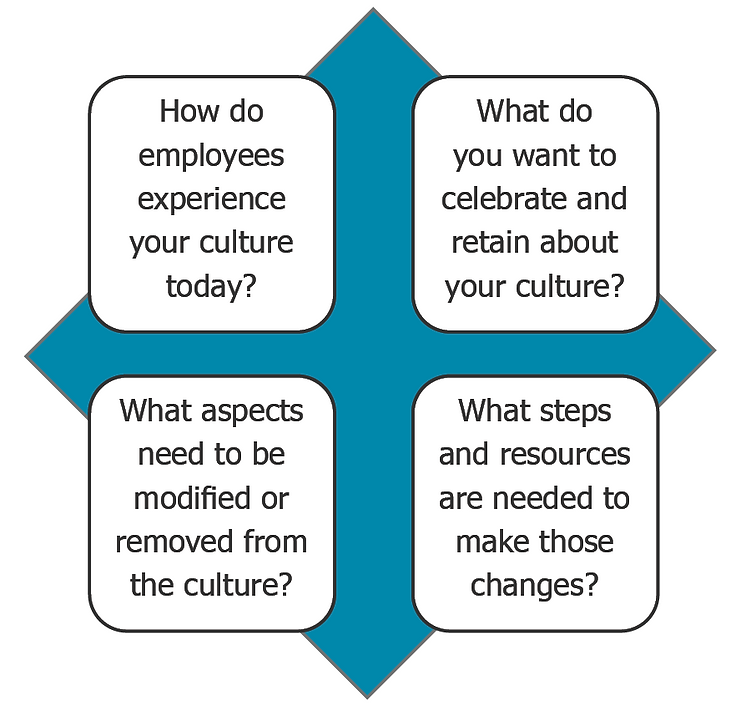Re-Examining Culture: The Employee Experience
The past two years have certainly been a rollercoaster. While the COVID-19 pandemic has calmed, current supply issues, inflation, and input and commodity pricing are in flux. We know challenges and a pace of rapid change will remain with us.
Cooperatives can’t control many of these outside factors. However, coops can control their response to external factors and intentionally create a positive environment where employees have the tools to thrive.
CULTURE CHECK
SHRM defines organizational culture as the proper way to behave within an organization. Organizational cultures are best seen through the eyes of employees. Let’s take a few minutes to step into someone else’s shoes in your organization.
How do you think they would respond to the following questions?

-
What gets rewarded in this cooperative? Examples include: numerical results, cooperation, customer service, favorites/friends of leaders
-
How do coworkers interact with each other? Consider how conflict is resolved, if people assume positive or negative intent of each other, amount of drama or friendship within the office.
-
How does the cooperative and leadership respond to employee mistakes? Are mistakes seen as learning opportunities or as a personal failure?
-
How do employees hear about changes to the cooperative, their department, job or customers?
-
Do employees have the resources and skills to meet the coop’s needs?
-
What are the best parts about working for this cooperative?
-
What are the worst parts about working for this cooperative?
-
What has changed for the better/worse over the past two years?
Now, think about those questions from the perspective of different employees. There is no “one definition” for culture.
Each employee experiences culture in their own way. They have their own lens to witness organizational culture, including different experiences based on their manager, location, job, background and personality. All these stories make up the collective culture of your cooperative.
Think about how an employee’s experience may vary based on the following factors:
-
New hires compared with long-term employees
-
Central office compared with branch or field locations
-
In-office, hybrid or remote work arrangements
-
Recent high school and college graduates compared with mid-career and late-career professionals
-
Leadership versus individual contributors
This simple exercise begins a longer conversation about the current and preferred culture. However, it is flawed. It assumes the person doing the exercise is empathetic enough to understand others’ points of view in the coop. This is why employee engagement surveys, stay interviews, exit interviews and other data points are critical in identifying existing culture and focusing on the preferred future state.
BE INTENTIONAL ABOUT CULTURE
The best organizations are intentional about culture, consider cultural implications during strategic planning and create an environment that supports organizational goals. They utilize their mission and vision as a backbone to determine how best to meet employee needs.



